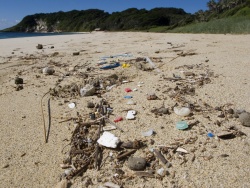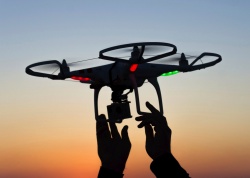
Search archive
Queensland joins NSW, SA, and NT announcing its “cash for containers” scheme
29/07/2016

This month, Queensland Environment Minister, Steven Miles, launched the state’s commitment to litter reduction by announcing the implementation of a Container Deposit Scheme (CDS) by 2018.
Pioneering the way, South Australia introduced Container Deposit Legislation (CDL) with the Beverage Container Act 1975 becoming operational in 1977 and was joined by NT in 2012. More recently NSW announced its scheme would be introduced in 2017 with the ACT considering the same path.
Australians purchase about 12.5 billion beverage containers a year. The Australian Food and Grocery Council estimates that this creates 1.32 million tonnes of packaging. Packaging has an environmental impact that is equal to approximately 10 – 15 per cent of the overall impact of the product on the environment.
Of that, on current estimates, almost 55 per cent is recovered and recycled. If a container deposit system was embraced Australia-wide, it is expected to lift that recovery rate over time to about 80 per cent. On current volumes, that means an extra 331,000 tonnes of glass, plastic, aluminium and other materials collected for recycling.
South Australia leads the nation in the litter reduction for recovery and recycle of beverage containers with an overall return rate of 76.5 per cent in the 2015 – 2016 period. That’s more than 582 million containers (43,165 tonnes). This sees a return of $58 million returned to the community during that time.
In South Australia alone the Scouts earn $2 million per year operating cash for container activity. According to CleanUp Australia, the community service sector will earn around $70 million a year to re-invest into local communities if we adopt this approach nationally.
And recycling more of these materials means reduced energy consumption and raw material use.
A Newspoll 2012 survey showed that over 80% of the Australian public support a container deposit scheme.
Queensland and NSW have made positive steps towards a national approach by announcing that their CDS would have the same administrator.
“Having a joint administrator was the most efficient approach.” Queensland's Environment Minister Steven Miles said.
"No one wants an outcome where the rules that apply to a bottle of soft drink sold at Tweed Heads, are different to the one you buy at the Gold Coast," he said.
The Waste Management Association (WMAA) described the move as "one more step toward a national approach to litter and resource recovery".
"The proposal for a seamless system, through one scheme administrator, can deliver a more effective outcome than two separate state bodies," said WMAA chief executive Martin Tolar.
"This is the start of a truly national approach to a CDS and sends a clear message to other jurisdictions who are yet to consider a CDS," he said.
Queensland and NSW will spend the next six months finalising arrangements before announcing the final details ready to operate from 2018.
Josh Frydenberg, Minister for Environment and Energy
20/07/2016

Prime Minister Malcolm Turnbull announced a cabinet reshuffle this week, appointing Josh Frydenberg to the post of Minister for Environment and Energy.
Mr Turnbull announced that Mr Frydenburg, who was Minister for Resources, Energy and Northern Australia in the previous cabinet, will move to an expanded environment and energy portfolio, which will combine all the key energy policy areas.
"These include energy security and domestic energy markets for which he has been previously responsible in the current portfolio. Renewable energy targets, clean energy development and financing and emission reduction mechanisms which are part of Environment," Turnbull added.
The appointment sees the alignment of the two portfolios for the first time and has widely been praised as a “smart step forward” recognising the significant policy relationship between the energy sector and Australia’s climate change commitments.
Mr Frydenberg wrote on his website, “It was an honour and a privilege to be sworn in as Minister for the Environment and Energy in the Turnbull Ministry on 19 July.”
“I’m looking forward to working with key stakeholders to ensure our environment is protected and enhanced. As we transition to a lower emissions economy, I’m also focused on ensuring Australia has a stable and secure energy supply, capitalising on new energy efficient technologies.”
Game of Drones
11/07/2016

The growth of the global drone industry will see a projected economic impact over USD$8 – 10 billion by 2025, creating over 100,000 international drone industry related jobs.
While still in the early stage of deployment across Australia, a growing bionetwork of drone software and hardware vendors is already catering to a long list of clients in agriculture, land management, energy, and construction.
Unmanned aerial vehicles (UVA) or ‘drones’ are essentially a flying robot. They can be as small as 5cm and as large as 50 metres and cost 10 times less than a helicopter to operate.
The aircraft may be remotely controlled or can fly autonomously through software-controlled flight plans in their embedded systems working in conjunction with GPS. UAVs are often associated with the military but they are also used for search and rescue, surveillance, traffic monitoring, weather monitoring and firefighting, among other things.
In 2015 the UAE Government launched the ‘Drones for Good’ awards, sought to find the most innovative and creative minds to realise solutions, utilising drones, that will improve people’s lives and provide positive technological solutions to modern day issues.
An award designed to offer the “people of the world an opportunity to make a real difference”. The hefty prize pool of $USD 2 million saw over 800 individual submissions from 57 different countries for the 2016 awards.
Here a just a few of the finalist entries, if you want more, head over to Drones for Good
The Rescue Drone
Gimball, a drone created by Swiss company Flyability, secured a million dollar development grant as the winner of the first UAE Drones for Good Award. Gimball can enter confined spaces and safely fly close to humans, proving to be highly effective in rescue missions. A rotating cage protects the drone, letting it collide with obstacles without losing stability. Read more.
Drone set to tackle pest problem
Insect pests can have an insidious impact on communities, spreading disease and ingraining poverty. None is more devastating than Africa’s tsetse fly, also known as the poverty insect.
Some 39 African countries are infested with the insect, whose bite spreads the parasite that produces sleeping sickness in humans and a similar disease in livestock, known as nagana. Of the infected countries some 32 are low-income food deficit countries and 29 are among the least developed countries of the world.
The drone uses gamma radiation to sterilise male tsetse flies reared in captivity, before releasing them into the wild by dropping them from drones. These sterile males then compete for mates with their wild counterparts, making it more difficult for the females to breed, thus driving down the population. Read more.
ReefRover drone supports study of underwater ecosystems
The ReefRover team has developed a drone that provides marine biology researchers, environmental monitoring agencies and science enthusiasts with new tools to effectively map, explore and study near-shore underwater ecosystems. By autonomously collecting visual and structural content, the ReefRover drone can help increase the rate of coral reef data collection and better organise the data to make it more useful and effective for research. Read more.
SM-1433 drone provides constant unmanned monitoring
A team from American University of Sharjah has developed a hydrogen fuel cell drone capable of constant unmanned monitoring which can be useful for industries such as power utility and oil and gas as well as serve sectors such as national defence, civil defence, public services, logistics, and telecommunications services.
AUS’s SM-1433 is capable of flying uninterrupted for up to three hours and survey 75 km stretch of any desired location before heading back to its base. It can also carry parcels, including first aid supplies, to target locations. Read more.
Rescue drones for off-roaders
Everybody has had a breakdown or been somewhere where they don’t have mobile coverage. What if you ever needed emergency help when there isn’t anyone around?
In an emergency, the drone records you exact GPS location and then travels to the nearest area of mobile coverage and sends a text to emergency services with a Google map location. You press one button for medical help or mechanical assistance. Read more.

